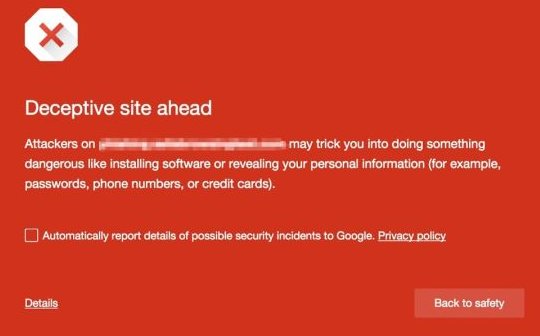We’ve all been susceptible to it: those annoying fake download buttons on certain sites that steer you to click in order to proceed. But soon you’ll no longer have to worry as Google has begun blocking websites that use deceptive content and ads to make you click on something you typically wouldn’t, such as false download buttons placed next to real ones or pop-ups demanding tech support to help remove malware you allegedly got on your device.

The blocking will take place through Google’s Safe Browsing tech, the large red interstitial you’ve likely seen when you click on a risky search result. While Safe Browsing has been around for several years, it primarily focused on preventing users from visiting sites that had malware or others Google considered unsafe.
However, in November 2015, Google began blocking sites that used “social engineering attacks” to get you to install infectious software or provide personal details and information. Now, Google is expanding its blocking to include websites with misleading embedded content, such as adverts. The search giant provided the following examples of deceptive ads it will block:



That last example you’ve probably seen repeatedly on large download sites like Sourceforge and CNET that seem to regularly have a fake button.
So what does this mean for webmasters? The change could be worrying as it’s difficult to monitor third-party content provided by random ad servers. While Google’s webmaster base doesn’t offer significant help, it does note that “ad networks may rotate the ads shown on your site's pages. You therefore might need to refresh a page a few times before you're able to see any social engineering ads appear.”
Of course for computer users, this change is noteworthy. Google Search guides billions of website clicks per day and several of those sites rely on the search giant to succeed. For what it’s worth, this may be the beginning of the end to fake download buttons.
Via Ars Technica
Advertisement
Learn more about Electronic Products Magazine





